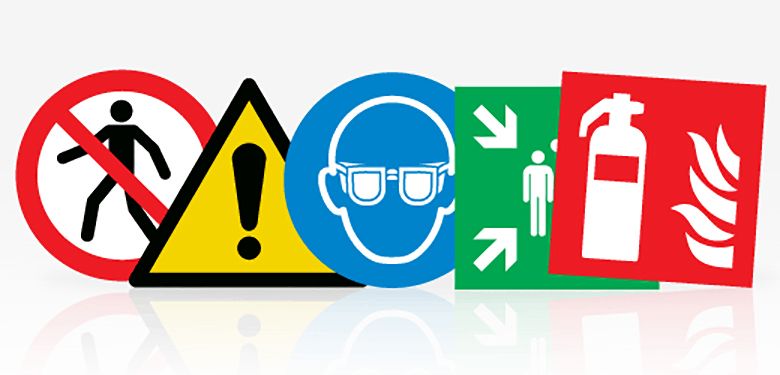As an employer, you have the duty to provide a safe workplace to your employees. You have to take all the necessary measures to protect them from any work related risks. To help you in this task, the designated worker is your asset. His or her tasks and status are precisely detailed by labour law.
Definition
The Designated Worker is the employer’s partner to evaluate the occupational risks for the employees’ health and safety and implement the necessary measures to protect them. The Designated Worker must keep the “Délégué à la Sécurité” (safety officer), who is appointed by the Staff Delegation (if any), informed on the risks and consult them on the protection measures before implementation. Preferably, the Designated Worker is not the same person as the “Délégué à la Sécurité”. The Designated Worker does not benefit from any protection against dismissal, unlike the “Délégué à la Sécurité”, who is a member of the staff delegation.
The Designated Worker is a privileged contact person for the Labour Medicine, the ITM (Luxembourgish Labour Inspection), management and Human Resources.
Appointment process
The Designated Worker is appointed by the employer directly, and can be any employee of the company to assist them in the protection and prevention of work accident, and psychosocial occupational risks, provided they meet the requirements in terms of professional experience.
The law does not foresee any particular procedure to appoint the Designated Worker. However, it is considered official when the below conditions are met:
- The appointment is made explicitly, preferably in writing
- The chosen employee’s professional qualification and experience are in line with what the law foresees, depending on the branch of the company.
- The employer clears enough time for the Designated Worker to deal with their responsibilities
The employer can however not force an employee to accept to be appointed Designated Worker. For companies of less than 50 employees, the employer themselves can take on the role, provided they meet the basic criteria in terms of professional skills and experience, and provided they can dedicate enough time to the role.
Should the Designated Worker resign, the employer has to replace them within 2 months from the end of contract, and can take over the role themselves for a maximum period of 12 months.
The Designated Worker’s missions
Their missions are defined by the règlement Grand Ducal of the 9th June 2006, which are:
- Organise the general supervision and ensure compliance with the legal and regulatory provisions in force concerning the safety and health of employees
- Define a company strategy ensuring the safety and health of their employees
- Monitor the working methods and means used, the evaluation and analysis of occupational risks, and the provisions relating to accident prevention
- Carry out regular safety inspections
- Maintain safety records and keep maintenance books
- Prepare, maintain and communicate safety and health, warning, alarm, response and evacuation plans
- Prepare, organise and conduct evacuation drills
- Assess the occupational safety and health situation in the company
- Be one of the privileged contact with the ITM, the inspection bodies, the occupational medicine the company is affiliated to, any other safety and health inspection authorities, as well as with the emergency services in the event of accidents and fires
Company classification and related requirements for Designated Workers
Companies are classified in groups depending on their headcount and business activity.
Based on this group classification, the law sets specific criteria for an employee to become a Designated Worker. The employer must ensure that they:
- Have the minimum experience required in the company’s business activity
- Attend Designated Worker trainings and get the minimum number of training hours required
- Have the appropriate time needed to take over their responsibilities
Risk position: by risk position is understood the number of people whose role is classified as a role at risk. The criteria for such classification is
- If the job exposes the employee to a risk of occupational illness or occupational accident or to physical or biological agents likely to be harmful to health
- If the role involves activities which may seriously endanger the health and safety of other employees or third parties
- If the role involves to control an installation whose failure may seriously endanger the health and safety of employees or third parties
Calculation of the time to allocate to your Designated Worker
The minimum average time per day required for a Designated Worker is therefore calculated as follows:
(Headcount x allocated second + Number of risk position x allocated second) / 60 sec.
Number of Designated Workers
This number is determined after calculation of the necessary time to allocate to one Designated Worker.
Below 480 minutes per day => 1 Designated Worker
Above 480 minutes per day => 2 Designated Workers
Above 960 minutes per day => 3 Designated Workers
Above 1,440 minutes per day => 4 Designated Workers
Above 1,920 minutes per day => 5 Designated Workers
The designated worker plays a crucial role in the safety of your company. Don’t take them lightly and give them all the tools they need to do their job. The rules and requirements for their appointment may seem complicated. With its extensive experience in this field, VISTIM can help you to set up your designated worker in the best possible conditions. Feel free to contact us.



